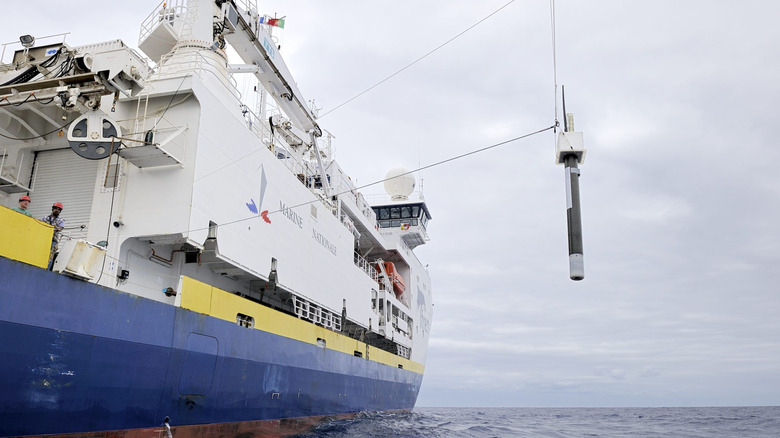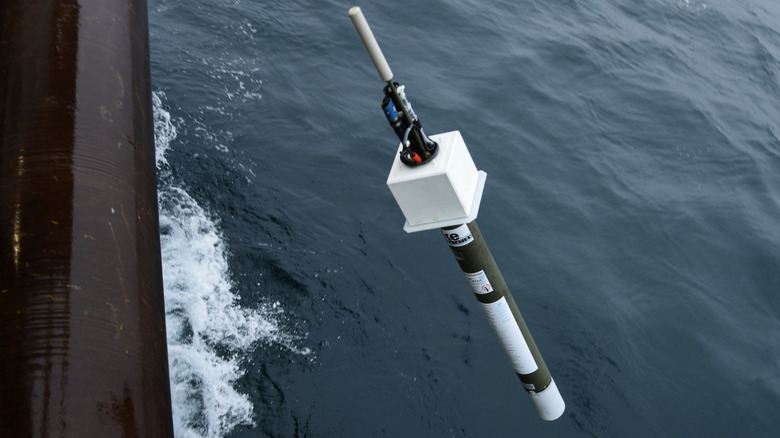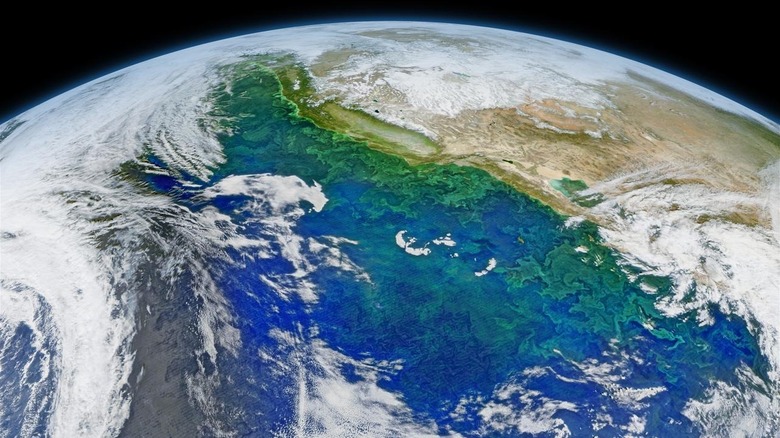This Canadian Robot Made A Big Discovery While Analyzing Earth's Phytoplankton
Pytoplankton are plant-like microorganisms that are estimated to have generated half of the Earth's oxygen supply. And even when they die, they fall to the ocean floor and turn into a massive carbon sink. Now, we finally have an idea of just how much mass they occupy, thanks to a network of drifting robots in the global ocean bodies. In blunt terms, the total mass of phytoplankton is roughly equal to 250 million elephants. As far as scientific measurements go, the total mass of phytoplankton floating just beneath the surface has been estimated at approximately 314 teragrams, or 346 million tons.
So, how did scientists measure the mass of microorganisms floating in the vast watery expanse covering the planet? Well, they relied on a network of drifting robotic observatories. In the span of over a decade, hundreds of floats have been put in the oceans by the BioGeoChemical-Argo program. Think of them as a free-floating global network of sensors that can measure a variety of important data, such as oxygen concentration, pH level (a measure of acidity or alkalinity), concentration of suspended particles in a water column, chlorophyll (the green pigment that enables photosynthesis), and downwelling irradiance (a measurement of the solar energy penetrating the ocean surface).
But why focus on phytoplankton? When we think of the oceans, the first thought that comes to mind is the majestic creatures they harbor, but not many think of phytoplankton, which are essential to the sustenance of life on our planet. Aside from being the foundation of the aquatic food chain, these microscopic plant-like organisms are responsible for nearly half of the planet's photosynthesis, the process of trapping sunlight and converting it into food. They are extremely abundant, and to such an extent that you will find millions of phytoplankton thriving in a drop of ocean water.
How do these robots help study oceanic health?
The BGC-Argo network of floating robots is equipped with a variety of sensors, each dedicated to measuring variables that are considered vital for biogeochemical processes involving biological mass, oxygen, and nitrogen cycles. The oxygen concentration is measured because it provides a clue not just to the number of phytoplankton, but also how much CO2 is being sequestered by the ocean. Nitrate levels are measured because they are a crucial phytoplankton nutrient, and their levels are seen as a measure of ocean productivity. The analysis of pH levels helps scientists understand the photosynthesis and respiration patterns in the ocean. Measurement of chlorophyll serves as a key identifier for phytoplankton activity.
But what's the end goal of all this analysis? These floats enable the measurement of short and long-term change in the ocean's productivity, such as how much oxygen is being produced, production of plant nutrients, and how the oceans are becoming more acidic over time. Simply put, the floating robots take a snapshot of the ocean's climate and health as seen from a biological, geological, and chemical lens.
Because phytoplankton play a critical role in the global ecosystem, keeping an eye on their population and patterns is extremely important. But observing them is no easy feat. Scientists at Canada's Dalhousie University, who came up with the estimation of global phytoplankton biomass, note that "at least half of that is not observed by space satellites." To recall, even NASA is deploying the PACE (short for Plankton, Aerosol, Cloud, and ocean Ecosystem) satellite to study phytoplankton from space.
A window into our planet's health
"What our paper highlights is that this global fleet of robots will be incredibly valuable for monitoring Earth's phytoplankton as a whole, so we can understand how they might respond as the ocean continues to warm," says Adam Stoer, lead author of the paper documenting the global phytoplankton mass that was published in the Proceedings of the National Academy of Sciences. He notes that the global presence of the robots has allowed the team to finally estimate the biomass of these aquatic microscopic life forms. But in addition to keeping an eye on their global distribution, another crucial goal of the robotic BGC-Argo floats is to analyze phytoplankton blooms, which are essentially rapid growth and accumulation of these organisms close to the ocean's surface.
According to research published in Nature, phytoplankton blooms can be beneficial for the coastal ecosystems (especially the fisheries business), but these events also trigger "major environmental problems." These algal blooms can often produce toxins that can accumulate in the food chain, triggering diseases in other life forms and humans who consume fish caught from bloom-affected regions.
These blooms can also rapidly reduce the presence of oxygen in the deeper layers of a water body, essentially creating anoxic "dead zones" that lead to animal die-off events and destroy the local ecosystem for all organisms. Sometimes, the scale of these blooming events is so massive that it can be observed from space, owing to their green and blue colors. Unfortunately, their scale and occurrence are only speeding up due to man-made factors, and that makes tools like the BGC-Argo floats even more important to keep an eye on these mass phytoplankton trends to assess the overall health of the planet.


